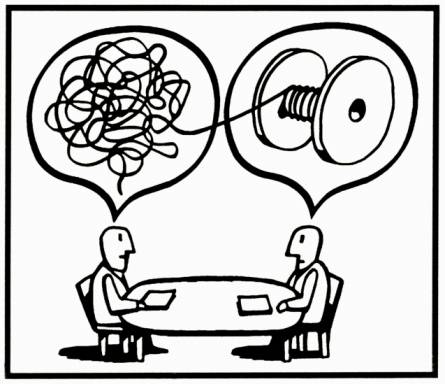I was speaking to a great group on Sensemaking today (Thanks Reggie and Tom for the invitation). One of the participants asked a great question, “How do we know/measure if we are making sense with the customer?
It’s a fascinating question.
I’d love your thoughts, but here are some ideas I’ve come up with:
I think it’s pretty easy to measure after the decision has been made. We can measure decision regret. We can assess, “Are they accomplishing what they had hoped to accomplish?”
But how do we measure sensemaking during the buying journey? How do we know that we are actually being helpful with how we engage our customers, helping them make sense of what they are trying to do?
We are used to all sorts of buying cycle/selling cycle metrics–customer commitments, certain activity levels on both the customer and sales sides.
But how do we measure and track whether we are actually helping the customer make sense of what they are trying to achieve? How do we determine where the customer is in their buying process, and how we contribute best to helping them move through it?
And then how to we use that to improve our sensemaking activities in engaging customers?
Some thoughts:
- We can develop engagement metrics that we use through the buying process. The thinking is that the more helpful we are being, the more engaged the customer will be with us–through all channels. As we see lower than expected engagement, we might presume that our sensemaking activities, may not actually be helpful.
- We might look at the types of information they seek and consume through the process. For example, early in the process, it may be information more oriented to helping them define the problem, determine the questions, determine the information they should be looking for.
- Related to 2, are they consuming and engaging in the information we are providing? Do they find it helpful?
- How much are they engaging us? If, in our sensemaking activities, we are being helpful, then they will probably be reaching out more frequently–at least in comparison to alternatives.
- Conversational analysis, what types of questions are they asking? How do those questions change during the buying process? Are they asking questions to learn about what questions they should be asking, what information they should be seeking, whether they may be missing something?
- What actions are they taking? For example, are they seeking to align the buying group issues and concerns?
- Do they seem to have an open mindset or closed mindset? Sensemaking activities tend to come from those with an open mindset. Those with a closed mindset have made up their minds–sensemaking does not make sense to them.
- Are they willing to admit they may have been wrong? In sensemaking, we are helping them determine what is most important to them. They may have had incorrect views, and their willingness to change might be an indicator of how we are helping them.
- Where are they seeking answers? Are they engaging other organizations that have been through similar changes? Are they seeking ideas and opinions from outside their own organization? Are they looking for information from people other than sales people?
- Some of what we and the customer normally do, might make sense (sorry). For instance their commitment to change; their alignment around goals and expectations; their ability to develop and execute a project plan that enables them to achieve the desired outcomes by the dates needed. With each of these, there may be some sensemaking activities that give them greater confidence that they are doing the right things. For example, in looking at their commitment to change, questions like, “What alternatives did you consider, why did you choose this particular course of action, how confident are you that this is the best course of action………?”
A lot of these are difficult to develop meaningful answer to. A lot are very difficult to measure. But qualitatively, they may indicate we are being more helpful than not, and that we are helping the customer move through their buying journey more effectively.
What are your thoughts?
We do have to have some way of knowing whether our sensemaking initiatives actually are making sense and helping the customer gain more confidence in their ability to make a high quality decison.

Leave a Reply